The year 2001 completely revolutionised the course of the World Motocross Championship. The three traditional categories created respectively in 1957 (500cc), 1962 (250cc) and 1975 (125cc) had been running parallel competitions until then. The Dorna company, which specialised in holding pure speed motorbike races, obtained, through a takeover, the right to do the same for the motocross Grand Prix. From 2001, it imposed a new formula. The competitions were to be held in a single round of 40 minutes plus two laps for each of the three categories, but necessarily at the same place and on the same date.
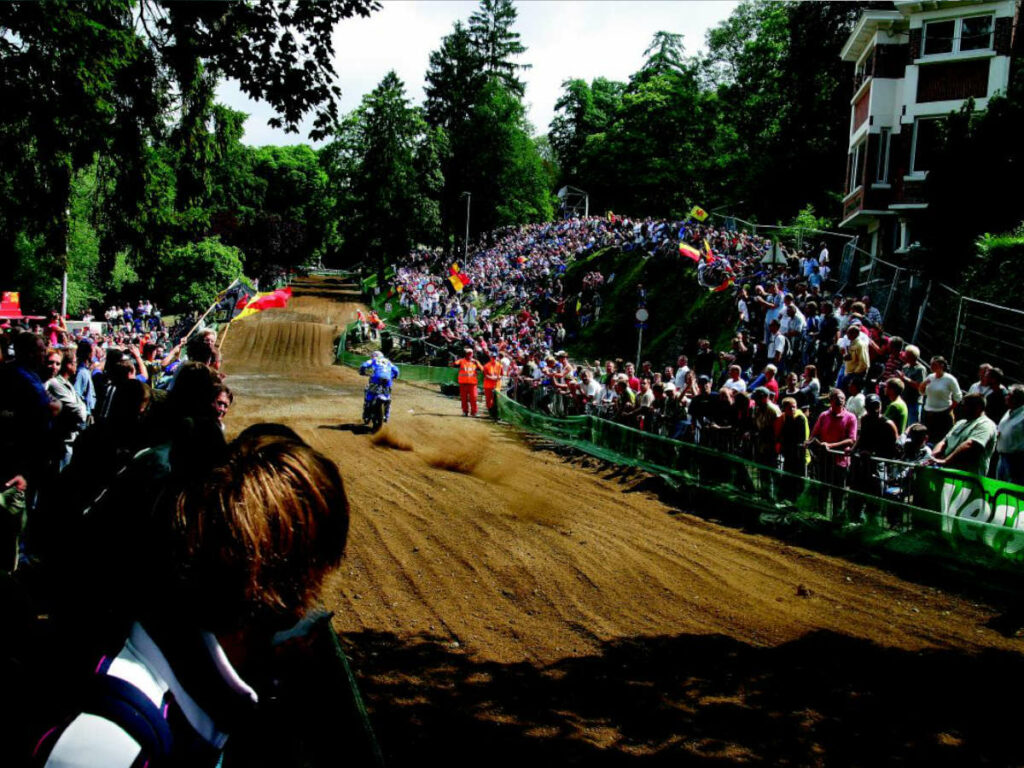
This upheaval consequently transformed the scale of the various Grands Prix organised throughout the season. The Citadelle circuit was modified with a start in the opposite direction to previous editions and new facilities were built in the chalet of the monument. It also hosts the prestigious Motocross des Nations. Motocross fans had the opportunity to admire the riders twice in Namur in 2001, on 5 August for the triple Grand Prix and on 30 September for the “Nations”.
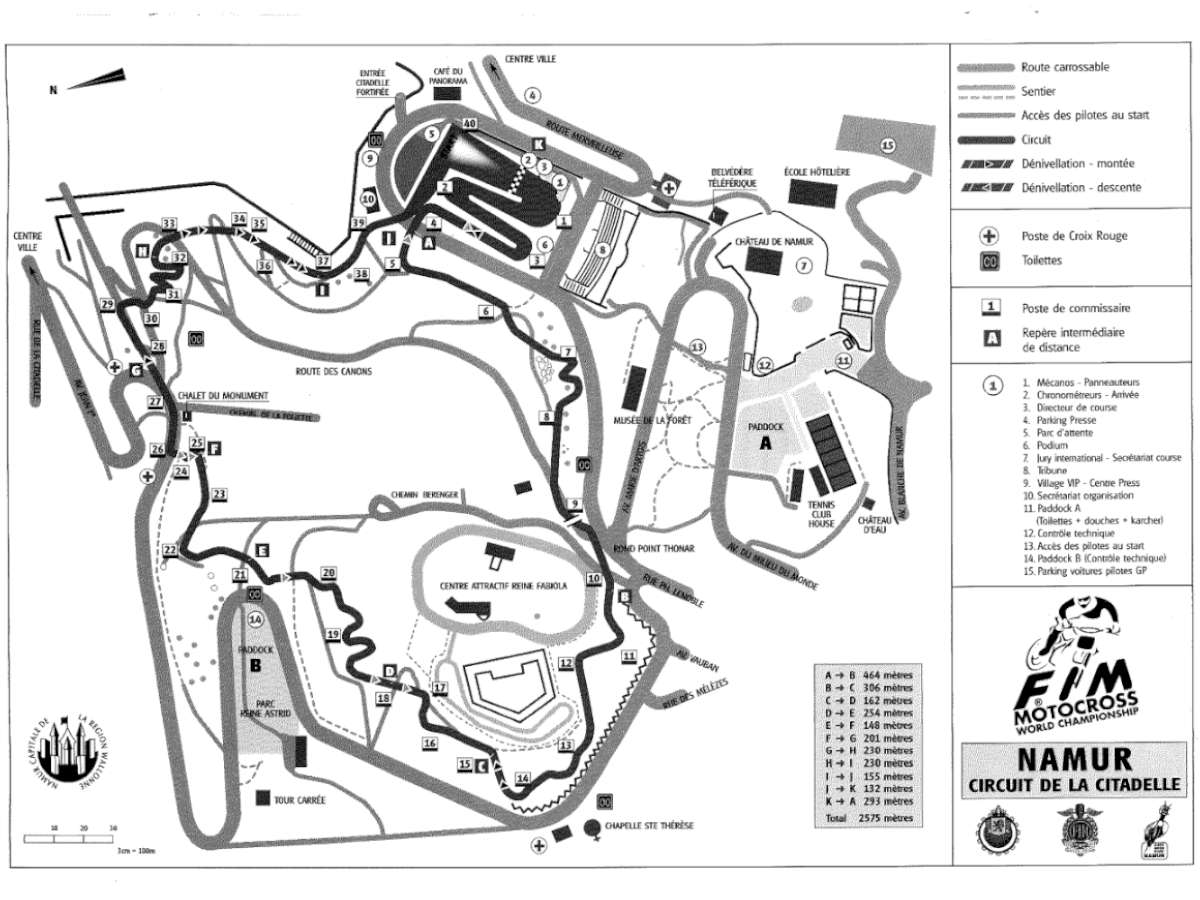
The Everts’ Everest
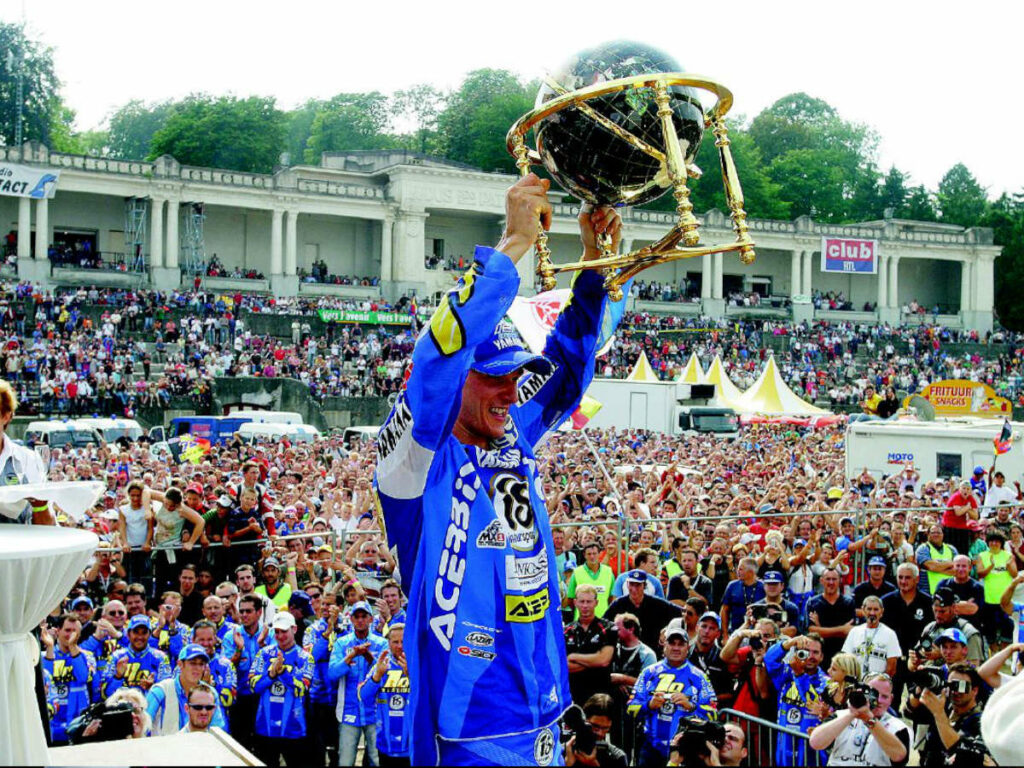
In spite of this exceptional display, the suspense hardly animated the three races as the domination of the favourites was overwhelming. Frenchman Pichon and Briton Dobb won the 125cc and 250cc classes. Stefan Everts crushed the competition in the 500cc class to equal Joel Robert’s record of 50 Grand Prix wins. Two other Belgians completed the podium: Marnicq Bervoets and the indestructible Joel Smets.
Given this Belgian superiority, the Motocross des Nations was supposed to go to the riders from the flat country. The Americans stayed at home after the September 11 attacks ! Unfortunately, Steve Ramon and Joel Smets were unlucky as they suffered a series of mechanical problems, while Stefan Everts won two out of three rounds. Frenchmen David Vuillemin, Yves Demaria and Luigi Seguy added their names to the list of winners and offered a first victory to France.
The Heritage In Danger?
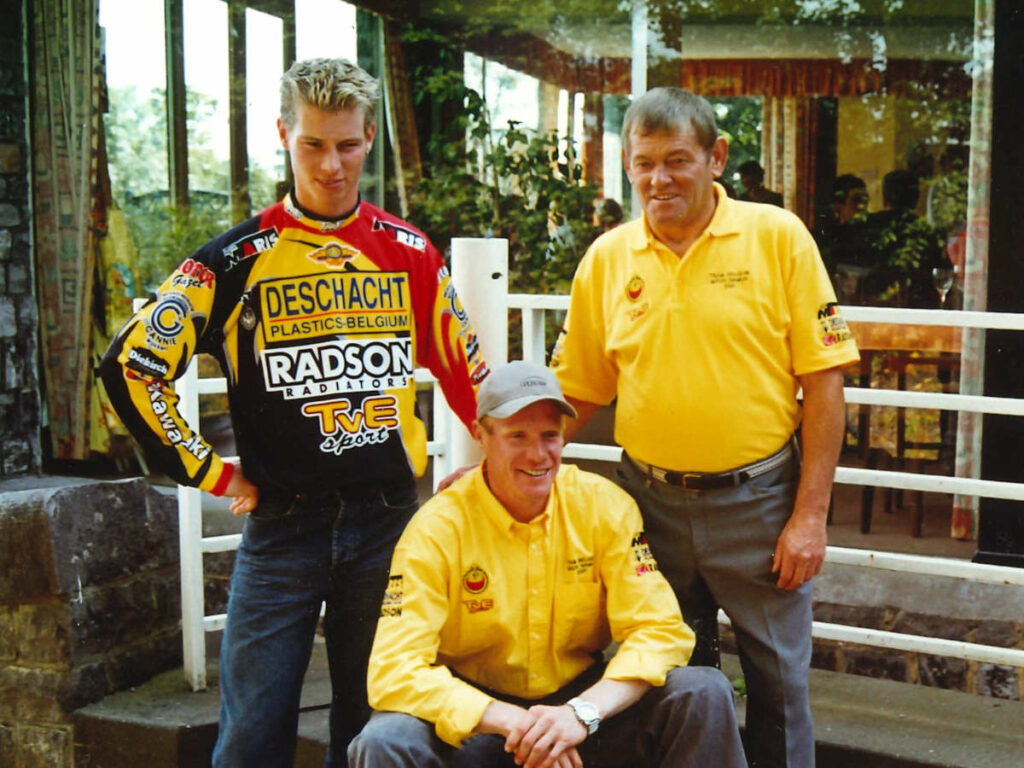
This cruel defeat announced a worse one. In 2002, no motocross Grand Prix was held at the Citadelle of Namur. The Genk circuit was preferred and the financial demands of Dorna became extravagant. The following year, the triple competition returned to Namur on 20 July. It crowned Stefan Everts twice (in the “Motocross GP” and in the 125cc class) and local rider Cédric Mélotte who beat Joel Smets in the new 650cc class. In the world championships the Belgians dominated their competitors. Everts won his seventh “Motocross GP” title, Smets won the 650cc class and Steve Ramon won the 125cc class.
In 2004, the rules changed once again with the arrival of a new owner. Youthstream replaced Dorna but financial logic continued to dictate. The categories were renamed: Mx1 (125cc), Mx2 (250cc), Mx3 (500/650cc). The races respect, once again, the two rounds formula. Namur is also back to its usual pattern with a Grand Prix date in August. The MX1 and MX2 categories will compete there from now on. Stefan Everts is still accumulating victories at the Citadelle by racing in the MX1 competition. In MX2, the young Italian Antonio Cairoli won his first Grand Prix.
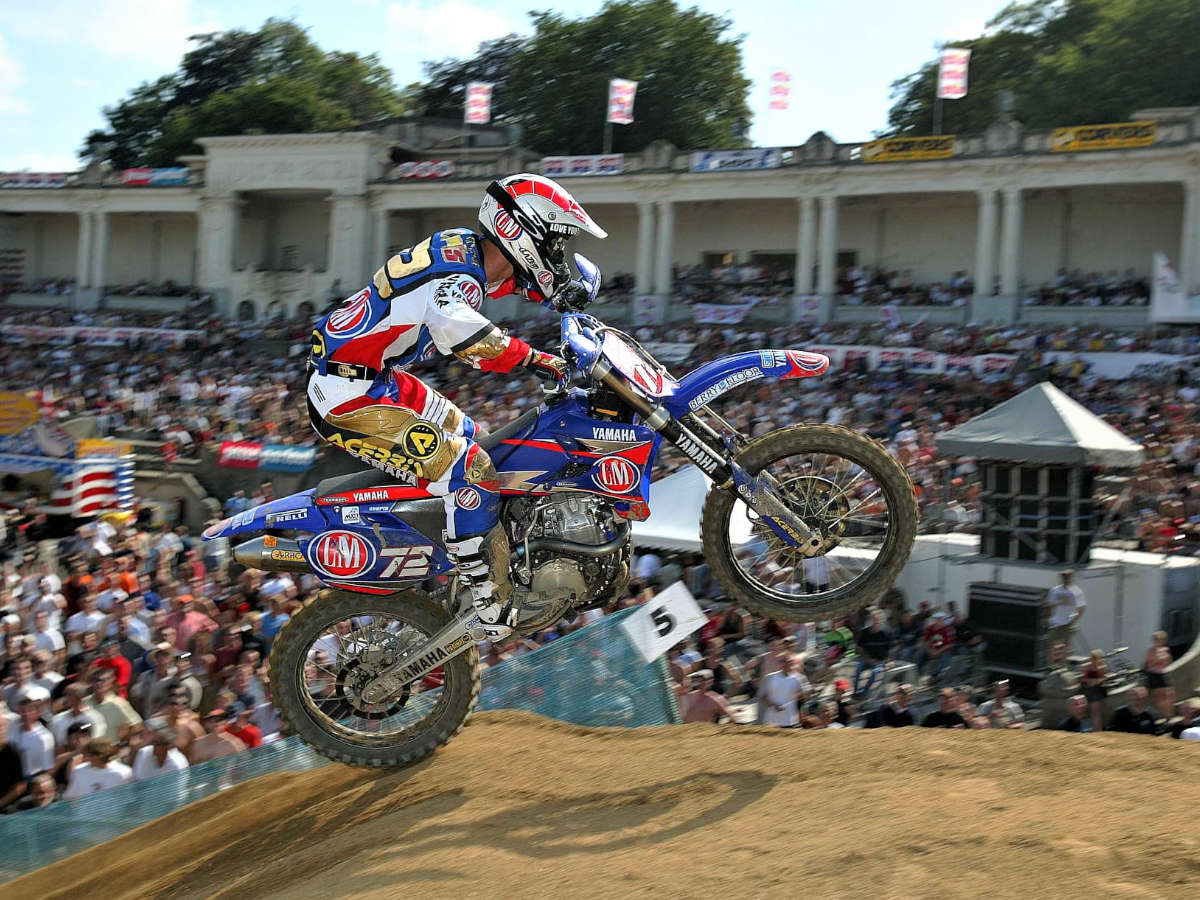
Two novelties in 2005 in Namur. The Grand Prix took place on 8 May, while in July the circuit hosted the first round of the Supermoto world championship, a discipline combining motocross and pure speed. Stefan Everts did not win the first round, but he won the second and the Grand Prix for the fifth time. In MX2, Antonio Cairoli won the first race but abandoned in the second race. The Australian Andrew McFarlane wins the Namur trophy, but he has to give way to the Italian for the world title.
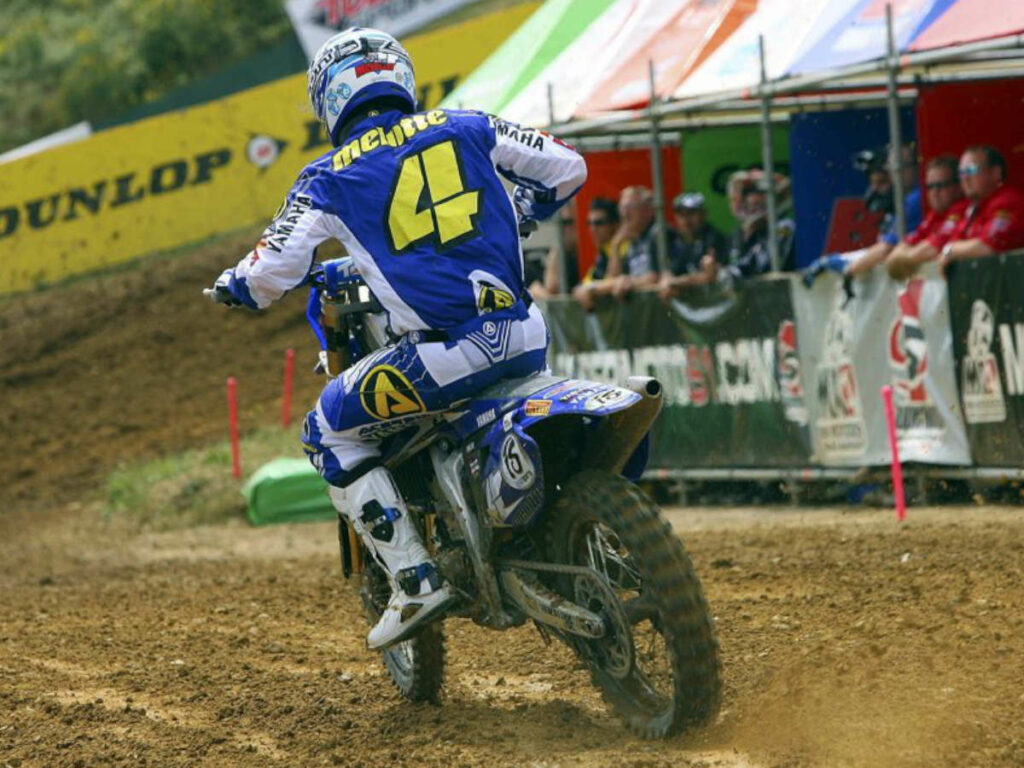
6 August 2006 was another memorable date for the Grand Prix de la Citadelle. Stefan Everts conquered the necessary points to be crowned world champion for the 10th time by winning both rounds. A few weeks later, he ended his career by winning the French Grand Prix, the 101st! In the championship, he is ahead of two other Belgians: Kevin Strijbos and Steve Ramon. Cédric Mélotte from Namur is 11th in this hierarchy. In MX2, Antonio Cairoli is untouchable in Namur, but he leaves the world title to Frenchman Christophe Pourcel.
Between the whims of the television cameras
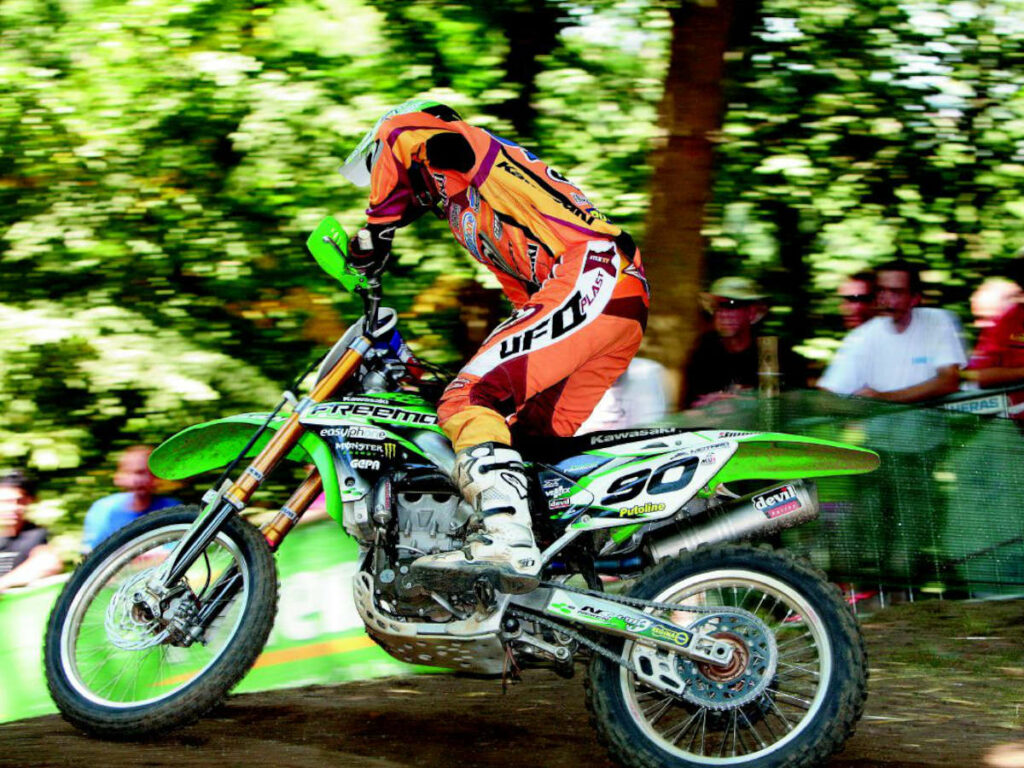
Everts’ victory has hardly been celebrated when doubts are already being raised about the holding of a Grand Prix in Namur in 2007. The company Youthstream, managed by the Italian Giuseppe Luongo, does not hide its preference for shorter circuits, better visible for the spectators but above all for the television cameras. The race returns, despite everything, to the slopes of the Citadelle. Sébastien Pourcel, the brother of the MX2 winner of the previous year, wins. Steve Ramon did not shine but, at the end of the season, he took the title after Joshua Coppins was stopped after a terrible crash in Czechia.
The evil witch
A few months after the end of the 2007 season, in November, a press release announced that the organising committee of the Grand Prix de la Citadelle would not be able to hold the competition the following year. The requirements imposed by the decision-making bodies of the world championship and the constraints inherent in the management of mass sports events finally overcame the local energies.
There was in the atmosphere of Namur a quality of great achievement for the champion who imposed himself there. I think the champions who won in Namur should always be proud to remind that because it was a real feat. If we look at the list of prize-winners, we notice that the biggest names in motocross have won there.
Michel Lecomte (sports journalist)

